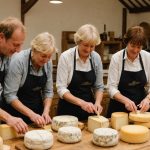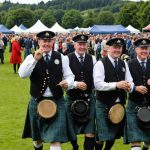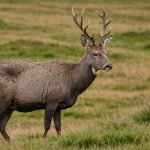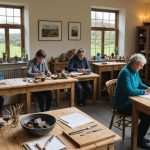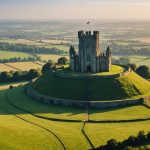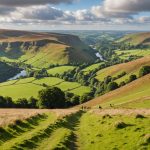Understanding Wildlife Photography
Successful wildlife photography hinges on patience and keen observation. The art of capturing animals in their natural environment requires understanding their behaviors and an appreciation for timing. This means waiting patiently for the right moment, whether it’s a lion’s yawn or a bird taking flight. Observing wildlife attentively allows photographers to anticipate movements and capture spontaneous behaviors effectively.
Techniques play a crucial role in showcasing the vitality of wildlife. One method involves setting your camera to a high shutter speed to freeze the action. Coupled with a telephoto lens, this enables you to capture intricate details from a safe distance. Burst mode is another helpful technique, allowing multiple shots to select the perfect frame that articulates the animal’s energy and dynamism.
This might interest you : Unveiling Glastonbury: Top Destinations for Discovering Ancient History and Enigmatic Legends
Knowing animal patterns and their habitats is vital for aspiring wildlife photographers. Different species have distinct routines, and understanding these can guide you to the best vantage points and times for shooting. For instance, early morning and late afternoon are typically the best times to find many animals active. Familiarizing yourself with natural surroundings will significantly enhance your photographic compositions.
Best UK National Parks for Wildlife Photography
Exploring national parks in the UK offers photographers an exceptional chance to capture wildlife in their natural habitats. With diverse wildlife hotspots, some parks stand out as prime locations for enthusiasts with a camera.
Have you seen this : Unveiling Sheffield”s Steel Heritage: Top Strategies for Exploring Britain’s Industrial Legacy
Listing Top National Parks
A highlighted gem among the national parks is the Cairngorms in Scotland. Its sprawling landscapes are home to elusive species like the Scottish wildcat and the golden eagle. Another remarkable location is the New Forest, where one might photograph rare birds amid ancient woodland.
Unique Wildlife Opportunities
Each park presents unique wildlife opportunities. The Pembrokeshire Coast is a wildlife photographer’s paradise with its rich seabird colonies. Meanwhile, the Peak District offers roving red deer, providing an enchanting backdrop for photographs. The key is knowing where these species thrive and positioning oneself for the perfect shot.
Seasonal Considerations
Timing is crucial for capturing the best images. Seasonal variations alter the visibility and behaviours of animals across wildlife hotspots. Spring is ideal for spotting newborns, while autumn sees migratory birds flock to the UK. Early morning and late afternoon provide the best lighting for capturing these magnificent creatures.
Essential Camera Equipment for Wildlife Photography
Capturing breathtaking wildlife moments requires the right camera gear that aligns with the unpredictable nature of the environment. For wildlife enthusiasts, the choice of camera can be pivotal. Mirrorless cameras are often recommended for their lightweight design and exceptional autofocus capabilities. DSLR cameras, despite being relatively bulkier, remain popular due to their durability and vast lens options.
Selecting the right lenses is crucial in wildlife photography. A telephoto lens, for instance, allows you to shoot distant subjects without disturbing them. If you’re focusing on smaller creatures, a macro lens might be your best friend, offering detailed close-ups that standard lenses cannot.
Beyond cameras and lenses, other equipment recommendations add significant value. Tripods offer stabilisation, essential in low-light situations or when using heavier lenses. Binoculars serve as excellent tools for scouting and tracking wildlife before setting up a shot.
When preparing for a wildlife photography adventure, ensure your equipment not only matches the demands of your shooting environment but also enhances your capability to catch fleeting moments with precision and creativity.
Techniques for Composition and Lighting
Capturing striking wildlife photos requires mastery over photography techniques and a keen eye for detail. The rule of thirds is an essential composition strategy where the frame is divided into nine equal parts. By positioning the subject off-centre, photographers can create more dynamic and engaging images. Additionally, framing techniques, such as using natural elements like branches or rocks, can lead to more focused and impactful images that draw the viewer’s attention directly to the main subject.
When it comes to lighting tips, natural light is a wildlife photographer’s best friend. The golden hour, which occurs shortly after sunrise or before sunset, provides soft and warm lighting. This enhances the image’s depth and adds a natural glow to the subject, making it standout beautifully. Adjusting your angles to maximize the available light can dramatically alter a scene, revealing intricate fur patterns or vibrant feather details.
Exploring creative perspectives is another method to bring interest to wildlife photographs. Experimenting with changes in viewpoint—such as lying on the ground or shooting from above—can transform a routine shot into a captivating visual story, offering viewers a novel look at familiar animals.
Ethical Considerations in Wildlife Photography
Wildlife photography is not just an art form, but a responsibility. Wildlife ethics play a crucial role in conservation photography. Respecting the creatures and environments we capture fuels this endeavour. Photographers are urged to adhere to guidelines intended for maintaining a respectful distance from animals. This helps in minimizing disturbances to their natural behaviour and habitats.
There is a fine line between capturing incredible shots and invading an animal’s space. The golden rule is simple: if your presence causes a change in an animal’s behaviour, you are too close. This mindful practice reflects the essence of responsible practices.
A significant impact of wildlife photography is its power to advocate for conservation. By showcasing both the beauty and plight of wildlife, photographers can drive awareness and action towards preserving these natural wonders. Images that tell stories about endangered species or threatened habitats can be powerful tools in conservation efforts. These practices foster a deeper connection between humans and wildlife, ultimately supporting the goal of preserving our planet’s biodiversity.
Adapting to Seasonal Changes in Wildlife Photography
Navigating seasonal photography requires understanding the dynamic nature of wildlife and their environments. With each season, wildlife behavior shifts; these changes influence their visibility and interaction within their habitats. For instance, springtime is often a period of increased activity as species engage in mating rituals and raise young ones, whereas autumn might reveal migrations or preparation for colder months.
As the environment changes, so too should your gear preparation. Anticipating changing environments means ensuring your equipment can withstand varying weather conditions. Waterproof covers are a must during rainy seasons, while insulated carrying cases protect gear from cold temperatures.
Seasonal changes also call for an adjustment in photography techniques. During winter, where natural light may be limited, photographers might prioritize using higher ISOs to capture well-lit images. Conversely, the summer months, with abundant daylight, offer more flexibility with exposure settings. Adapting your practices to match the behavior and habitats of animals, such as using longer lenses during breeding seasons to reduce disturbance, can result in more intimate and compelling photographs. Embrace these transitions for a rewarding wildlife photography experience.
Personal Anecdotes and Success Stories
Sharing experiences through photographs serves as a profound way to narrate adventures and encounters. Let’s delve into the captivating world of wildlife photography through insightful anecdotes and successful wildlife experiences.
Insights from Experienced Photographers
Several seasoned photographers have found profound inspiration in nature. They often highlight the importance of patience and understanding animal behaviour as critical components in capturing the perfect shot. One photographer narrated how waiting quietly by a waterhole for hours eventually rewarded them with an awe-inspiring image of a lioness and her cubs. Such experiences emphasize the necessity for patience.
Memorable Wildlife Encounters
Wildlife photography is replete with extraordinary encounters. Consider the thrilling moment when a photographer documented a family of playful otters in their natural habitat. This, they shared, helped them appreciate the unpredictability and serendipity inherent in capturing authentic moments. Such stories underscore how patience and presence in the moment lead to unforgettable photographs.
Learning from Challenges
Challenges are abundant in wildlife photography. Weather conditions and elusive subjects often test a photographer’s resilience. A memorable narrative involves a photographer persevering through extreme weather, resulting in their most cherished photographs of the aurora borealis dancing above a snowy landscape. These case studies teach invaluable wisdom in adaptability and persistence.





